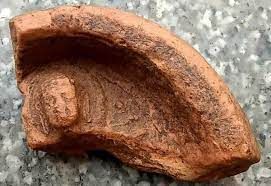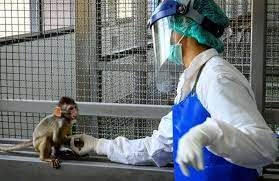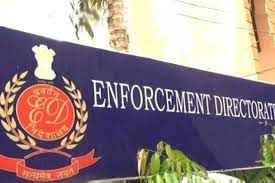UPSC Daily Current Affairs- 28th February 2023 | Current Affairs & Hindu Analysis: Daily, Weekly & Monthly PDF Download
| Table of contents |

|
| GS-I |

|
| Back2Basics: Lalitagiri Buddhist Complex |

|
| GS-II |

|
| Roles and functions of the ED |

|
| Allegations against ED |

|
| Challenges to ED |

|
| Way forward |

|
| GS-III |

|
| GS-IV |

|
GS-I
ASI finds 1,300-yr-old Buddhist Stupa in Odisha

Why in News?
The Archaeological Survey of India (ASI) stumbled upon a 1,300-year-old stupa right in the middle of a Khondalite mining site in Odisha’s Jajpur district.
About the Stupa
- The stupa could be 4.5-meter tall and initial assessment showed it may belong to the 7th or 8th
- It was found at Parabhadi which is situated near Lalitagiri, a major Buddhist complex, having a large number of stupas and monasteries.
- The newly discovered stupa was possibly disfigured in an earlier period.
Back2Basics: Lalitagiri Buddhist Complex
- Lalitagiri is a major Buddhist complex in the state of Odisha.
- The complex is home to stupas, ‘esoteric’ Buddha images, and monasteries (viharas), which is the oldest site in the region.
- Significant finds at this complex include Buddha’s relics. Tantric Buddhism was practiced at this site.
- Together with the Ratnagiri and Udayagiri sites a short distance away, Lalitagiri is part of the “Diamond Triangle”.
- It used to be thought that one or all of these were the large Pushpagiri Vihara known from ancient records, but this has now convincingly located at a different site.
Stupa Architecture
In the most basic sense, as an architectural representation of a sacred burial site, a stupa — no matter where it is located in the world or when it was built — has three fundamental features.
- A hemispherical mound (anda) The anda’s domed shape (green highlights) recalls a mound of dirt that was used to cover the Buddha’s remains. As you might expect, it has a solid core and cannot be entered. Consistent with their symbolic associations, the earliest stupas contained actual relics of the Buddha; the relic chamber, buried deep inside the anda, is called the tabena. Over time, this hemispherical mound has taken on an even grander symbolic association: the mountain home of the gods at the center of the universe.
- A square railing (harmika) The harmika (red highlights) is inspired by a square railing or fence that surrounded the mound of dirt, marking it as a sacred burial site.
- A central pillar supporting a triple-umbrella form (chattra) The chattra, in turn, was derived from umbrellas that were placed over the mound to protect it from the elements (purple highlights). Just as the anda’s symbolic value expanded over time, the central pillar that holds the umbrellas has come to represent the pivot of the universe, the axis along which the divine descends from heaven and becomes accessible to humanity. And the three circular umbrella-like disks represent the three Jewels, or Triantha, of Buddhism, which are the keys to a true understanding of the faith: (a) Buddha; (b) dharma (Buddhist teachings or religious law); and (c) sangha (monastic community).
Around these three core building blocks were added secondary features.
- Enclosure wall with decorated gateways (toranas) at the cardinal directions The wall — with its trademark three horizontal stone bars (in the top image) — surrounds the entire structure. The wall is marked in light blue highlights and the toranas in yellow.
- A circular terrace (medhi) The terrace — surrounded by a similar three-bar railing — supports the anda and raises it off the ground (black highlights); it likely served as a platform for ritual circumambulation.
Source: The Hindu
GS-II
SC raps govt on plea on ED chief’s term
Why in News?
The Supreme Court has sharply reacted over tenure extensions granted to Enforcement Directorate Director by the government to subvert ongoing investigations against their leaders.
What is Enforcement Directorate (ED)?
- ED was formed in 1957 to look into cases of foreign exchange-related violations, a civil provision.
- It goes back to May 1, 1956, when an ‘Enforcement Unit’ was formed in the Department of Economic Affairs.
- Now, the ED falls under the finance ministry’s Department of Revenue.
- But in 2002, after the introduction of the PMLA, it started taking up cases of financial fraud and money laundering, which were of criminal nature.
- It was then tasked for handling Exchange Control Laws violations under the Foreign Exchange Regulation Act (FERA).
Today, it is a multi-dimensional organisation investigating economic offences under the:
- Prevention of Money Laundering Act (PMLA)
- Fugitive Economic Offenders Act
- Foreign Exchange Management Act
- Foreign Exchange Regulation Act (FERA)
Its establishment
- When proceeds of crime (property/money) are generated, the best way to save that money is by parking it somewhere, so one is not answerable to anyone in the country.
- Therefore, there was a need to control and prevent the laundering of money.
- The PMLA was brought in for this exact reason in 2002, but was enacted only in 2005.
- The objective was to prevent parking of the money outside India and to trace out the layering and the trail of money.
- So as per the Act, the ED got its power to investigate under Sections 48 (authorities under act) and 49 (appointment and powers of authorities and other officers).
At what stage does the ED step in when a crime is committed?
- Whenever any offence is registered by a local police station, which has generated proceeds of crime over and above ₹1 crore, the investigating police officer forwards the details to the ED.
- Alternately, if the offence comes under the knowledge of the Central agency, they can then call for the First Information Report (FIR) or the chargesheet if it has been filed directly by police officials.
- This will be done to find out if any laundering has taken place.
What differentiates the probe between the local police and officers of the ED?
Case study:
- If a theft has been committed in a nationalised bank, the local police station will first investigate the crime.
- If it is learnt that the founder of the bank took all the money and kept it in his house, without being spent or used, then the crime is only theft and the ED won’t interfere because the amount has already been seized.
- But if the amount which has been stolen is used after four years to purchase some properties, then the ill-gotten money is brought back in the market.
- Or if the money is given to someone else to buy properties in different parts of the country, then there is ‘laundering’ of money.
- Hence the ED will need to step in and look into the layering and attachment of properties to recover the money.
- If jewellery costing ₹1 crore is stolen, police officers will investigate the theft. The ED, however, will attach the assets of the accused to recover the amount of ₹1 crore.
Roles and functions of the ED
- Summon, Search and seizure: The ED carries out search (property) and seizure (money/documents) after it has decided that the money has been laundered, under Section 16 (power of survey) and Section 17 (search and seizure) of the PMLA.
- Arrest and detentions: On the basis of that, the authorities will decide if an arrest is needed as per Section 19 (power of arrest).
- Attachment of property: Under Section 50, the ED can also directly carry out search and seizure without calling the person for questioning. It is not necessary to summon the person first and then start with the search and seizure.
- Filing of chargesheet: If the person is arrested, the ED gets 60 days to file the prosecution complaint (chargesheet) as the punishment under PMLA doesn’t go beyond seven years.
Why ED mostly grips Politicians?
- Exposing rampant corruption: It is not always ironic to say that most politicians are never corrupt. We have a very inglorious past of political corruption.
- Selective witch-hunt: The ED has often been attacked for initiating investigations, raiding and questioning leaders of opposition parties, be it under the current regime or under past governments.
Issues with PMLA
- Misuse of central agencies: PMLA is being pulled into the investigation of even ordinary crimes by the Enforcement Directorate.
- Seizing of assets: Assets of genuine victims have been attached. The ED could just walk into anybody’s house.
- Politically motivated raids: In all this, the fundamental purpose of PMLA to investigate the conversion of “illegitimate money into legitimate money” was lost.
- Opacity of charges: Petitioners pointed out that even the Enforcement Case Information Report (ECIR) – an equivalent of the FIR – is considered an “internal document” and not given to the accused.
- Vagueness over evidence: The accused is called upon to make statements that are treated as admissible in evidence.
- Harassment: The ED begins to summon accused persons and seeks details of all their financial transactions and of their family members.
- Against individual liberty: The initiation of an investigation by the ED has consequences that have the potential of curtailing the liberty of an individual.
Allegations against ED
- Huge discretions: The ED is the only Central agency in the country that does not require permission from the government to summon or prosecute politicians or government functionaries for committing economic offences like money laundering.
- Used for petty crimes: PMLA is pulled into the investigation of even “ordinary” crimes and assets of genuine victims have been attached.
- Actual purpose denigrated: PMLA was a comprehensive penal statute to counter the threat of money laundering, specifically stemming from the trade in narcotics.
- Violations of Rights: PMLA was enacted in response to India’s global commitment to combat the menace of money laundering. Instead, rights have been “cribbed, cabined and confined”.
- Functional opacity: There is also a lack of clarity about ED’s selection of cases to investigate. We often see ED raiding houses of opposition parties suddenly.
- Poor rate of conviction: We have hardly read the conclusion of cases by ED. Meantime media-trial tears off the accused person’s credibility which is the most desired intent.
- Under-trials and slower prosecution: ED has been focusing on keeping the accused in custody rather than actually proving the charges against them.
Challenges to ED
- ED being dragged to court: The petitions against the ED had the effect of slowing down the investigations, as officers have to defend themselves in court.
- Foul crying politicians: There are attempts to cover up unexplained, high-value transactions that fall within the PMLA’s ambit
- Investigation of foreign transactions: Getting information on accounts and money stashed abroad to establish a trail is the biggest challenge they face.
Way forward
- The fight against corruption is intimately linked with the reform of the investigations.
- Therefore the adjudicating authorities must work in cooperation and ensure the highest standards of transparency and fairness.
- ED has been walking a tightrope to safeguard its integrity by speeding up investigations and court procedures.
- The need of the hour could be systemic fixes—and not shrill calls to throw the baby out with the bathwater.
- It is unlikely that corruption can be substantially reduced without modifying the way government agencies operate.
Source: Indian Express
Bodoland International Knowledge Festival
Why in News?
The first Bodoland International Knowledge Festival recently began in Assam’s Kokrajhar district.
About Bodoland International Knowledge Festival:
- The festival is being hosted by Bodoland University with support from the Bodoland Territorial Region (BTR) government.
- It seeks to provide a platform for thought leaders, educators, Research scholars, researchers, and practitioners to engage with constituents of Higher Education Institutions in BTR through participation.
- Goal: To create, foster and promote knowledge exchange, solution sharing, and partnership building for the achievement of social development priorities and key Sustainable Development Goals (SDG) 2030 in contemporary BTR and the world.
- It aims to draw the best practices from across the world to enhance scientific temperament for the creation of “Peaceful, Green and Smart Bodoland” in light of the Bodo Peace Accord 2020.
Bodo Peace Accord 2020:
- It is a tripartite accord signed in 2020 by representatives of Bodo organizations with the Central and Assam governments.
- The Bodo parties to the agreement include the All Bodo Students’ Union (ABSU), the United Bodo People’s Organisation (UBPO), and all four factions of the National Democratic Front of Boroland (NDFB).
- It presents a new model of power-sharing and governance in Assam under the Sixth Schedule of the Indian Constitution.
- Features:
- Bodoland Territorial Area Districts (BTAD) which comprises four districts -Kokrajhar, Chirang, Baksa and Udalguri will be renamed the Bodoland Territorial Region (BTR).
- The number of seats in the Bodoland Territorial Council (BTC) will be increased from 40 to 60 without adversely affecting the existing percentage of reservation for tribals”.
- It promises more legislative, executive, and financial powers to the BTC in respect of 40 subjects already transferred to it and eight additional subjects.
- The Assam government will set up a Bodo-Kachari Autonomous Council, which will be a satellite council for the focused development of Bodo villages outside the BTR.
- The Indian government will expedite the process of granting Hills tribe status to Bodos living in Hills areas.
- It also promises Scheduled Tribe status to Bodos living in the hill districts of Karbi Anglong and Dima Hasao.
- The Deputy Commissioners and Superintendents of Police will be appointed in consultation with the BTC authority.
Source: The Print
GS-III
Bisphenol A
Why in News?
Recent studies have reported that ‘Bisphenol A’, may shorten the life cycle of a mosquito and lead to a population explosion.
About Bisphenol A:
- Bisphenol A is a synthetically obtained colourless, crystalline organic compound that occurs in the solid phase belonging to the diphenylmethane group.
It is soluble in organic solvents but poorly dissolves in water
- It is also used as eyewear glasses. It is a chemical is widely used to soften plastics, paints, and other products.
- It is known to impair reproduction and development in aquatic organisms.
- Its exposure is delayed larval development and pupation time in common fruit fly (Drosophila melanogaster).
Uses of Bisphenol A :
- BPA polycarbonate plastics are very sturdy in nature and are used to make large variants of microwave-proof utensils.
- It is used as a material for safety glasses, bulletproof windows and helmets.
- Bisphenol A acts as a component in epoxy resins that are very good coating agents and therefore is used for the protective coating of pipelines and to cover the inner surface of food cans.
- It is used in many medical devices such as heart-lung machines, incubators, artificial kidneys, dental fillers, and sealants.
- It is also used as eyewear glasses , due to their optical clarity.
Environmental impacts of Bisphenol A:
- BPA can enter the environment directly through the leaching of chemicals or degradation of materials containing bisphenol A and may render the land unfertile and barren making it unsuitable for agriculture.
- It affects the growth and reproduction of marine life.
- It causes endocrine effects in fish, amphibians, and reptiles.
Adverse effects of Bisphenol A on human health:
- When ingested, the chemical disrupts the endocrine system by interfering with the hormones and affecting the brain and prostate gland of foetuses, infants, and children.
- It can cause high blood pressure, diabetes and cardiovascular disease in adults.
- BPA is a xenoestrogen and mimics estrogen present in the body, thus exhibiting hormone-like properties.
- It can indirectly aid in the spread of vector-borne diseases in humans and animals.
Source: DOWN TO EARTH
What is Augmented Reality (AR)?
Why in News?
MIT researchers recently built an augmented reality headset called X-AR that lets users see hidden objects inside a box or under a pile.
About Augmented Reality (AR):
- It is an enhanced version of the real physical world that is achieved through the use of digital visual elements, sound, or other sensory stimuli and delivered via technology.
- It overlays digital content onto real-life environments and objects.
- AR works by superimposing digital information onto real-world objects to create a 3D experience that allows users to interact with both the physical and digital worlds.
- It incorporates three features: a combination of digital and physical worlds, interactions made in real time, and accurate 3D identification of virtual and real objects.
- Unlike Virtual Reality (VR), which creates its own cyber environment, AR adds to the existing world as it is.
What is Virtual Reality (VR)?
- It is a simulated 3D environment that enables users to explore and interact with a virtual surrounding in a way that approximates reality as it is perceived through the users' senses.
- The environment is created with computer hardware and software, and the users need to wear devices such as helmets or goggles (Virtual Reality headsets or helmets) to interact with the environment.
Source: The Hindu
National Agricultural Cooperative Marketing Federation of India Ltd.(NAFED) , Agricultural Produce & Livestock Market Committee (APMC ) and e-NAM

Why in News?
Recently, a Nashik onion cultivator destroyed 200 quintals of ready-to-harvest crops, fearing bad returns.
About National Agricultural Cooperative Marketing Federation of India Ltd.(NAFED):
- National Agricultural Cooperative Marketing Federation of India Ltd.(NAFED) was established in 1958.
- It is registered under the Multi-State Co-operative Societies Act.
- It was set up with the object to promote Cooperative marketing of agricultural produce to benefit the farmers.
- Agricultural farmers are the main members of Nafed, who have the authority to say in the form of members of the General Body in the working of Nafed.
Objectives :
- to facilitate, coordinate, and promote the marketing and trading activities of the cooperative institutions, partners, and associates in agricultural, other commodities, articles, and goods.
- to undertake or promote on its own or on behalf of its member Institutions or the Government or Government Organizations, Inter-State, and international trade and commerce.
- to act as an agent of any Government agency or cooperative institution, for the purchase, sale, storage, and distribution.
- to act as an insurance agent and to undertake all such work that is incidental to the same.
- to organize consultancy work in various fields for the benefit of the cooperative institutions.
- to undertake the manufacture of agricultural, machinery and implements, processing, packing, etc.
- to maintain transport units of its own or in collaboration with any other organization in India or abroad.
- to undertake marketing research and dissemination of market intelligence.
- to subscribe to the share capital and undertake business collaboration.
- to arrange for the training of employees of marketing/ processing/supply cooperative societies
Additional Information:
About Agricultural Produce & Livestock Market Committee (APMC )
- The Agricultural Produce & Livestock Market Committee was established under the provisions of the APLM Act.
- These are marketing boards set up by state governments to eliminate farmer exploitation by intermediaries
- The APMC laws in most states require farmers to sell a variety of goods in their neighbourhood mandis.
- A State is geographically divided into various units and markets (also known as Mandis) which are established in different places within the state.
- All food must be brought to market and auctioned off.
Benefits of APMC :
- They safeguard the farmers from exploitation by creditors and other intermediaries.
- They provide storage facilities such as go-downs etc. to the farmers.
- They arrange for farmer markets so that the farmers could sell their produce to the consumers directly.
- They help in controlling price fluctuations.
About National Agriculture Market or eNAM:
- eNAM platform is an online trading platform for agricultural commodities in India.
- It was launched in 2016 as a pan-India electronic trade portal linking agricultural produce market committees (APMCs) across all states.
- It was launched with the objective of integrating the existing Mandis into a “One Nation One Market” for agricultural commodities in India.
- It facilitates farmers, traders, and buyers with online trading in commodities.
- It provides for contactless remote bidding and mobile-based anytime payment for which traders do not need to either visit mandis or banks for the same.
- Small Farmers Agribusiness Consortium (SFAC) is the lead agency for implementing e-NAM.
- It functions under the aegis of the Ministry of Agriculture and Farmers’ Welfare
Source: THE TIMES OF INDIA
GS-IV
Ethical Animal Research: Prospects and Challenges

Why in News?
A proposed measure in Switzerland would have made that country the first to ban medical and scientific experimentation on animals.
What counts as ‘Ethical’ animal research?
- There is no single standard definition of ethical animal research.
- Ethical animal research refers to the use of animals in scientific studies while ensuring that the animals are treated humanely and their welfare is protected.
- It involves balancing the benefits of the research with the potential harm to the animals and minimizing any harm or suffering that the animals may experience.
Issues involved in animal research
- Inhumane treatment: Animals are often not treated humanely and are mishandled throughout the research process, including during transport, housing, and experimental procedures.
- Animal rights ignored: Animal rights advocates argue that animals have inherent rights and should not be used for human purposes. They argue that animals have the right to life, liberty, and freedom from suffering, and that using animals in research violates these rights.
- Animal distress: We should consider animals’ distress. If something is known to be painful in humans, it is assumed to be painful in animals as well.
The 4 R’s of animal research
The 3 R’s encourage scientists to develop new techniques that allow them to replace animals with appropriate alternatives. The principles are summarized as:
- Reduction
- Refinement
- Replacement
- Rehabilitation
Guidelines for animal research
Federal research agencies follow guiding principles in evaluating the use and care of animals in research.
- Empathy for all: One is that the research must increase knowledge and, either directly or indirectly, have the potential to benefit the health and welfare of humans and other animals.
- Minimal use: Another is that only the minimum number of animals required to obtain valid results should be included.
- Minimise pain and distress: Researchers must use procedures that minimize pain and distress and maximise the animals’ welfare.
- Using IT tools: They are also asked to consider whether they could use non-animal alternatives instead, such as mathematical models or computer simulations.
Why is animal research essential?
- Non-invasive study: Animal research benefits both humans and animals. Numerous medical advances exist because they were initially studied in animals.
- Benefits entire wildlife: Animal research has allowed for the eradication of certain diseases in cattle, for example, leading not only to reduced farm cattle deaths and human famine, but also to improved health for wild cattle.
- Veterinarian care: Health care advances for pets – including cancer treatments, effective vaccines, nutritional prescription diets and flea and tick treatments – are also available thanks to animal research.
Way forward
- Specific guidelines for ethical animal research are typically established by national governments.
- Independent organisations also provide research standards.
- Create Institutional Animal Care and Use Committee.
Source: The Hindu
|
44 videos|5271 docs|1113 tests
|
FAQs on UPSC Daily Current Affairs- 28th February 2023 - Current Affairs & Hindu Analysis: Daily, Weekly & Monthly
| 1. What are the subjects covered in the UPSC exam? |  |
| 2. What is the significance of the General Studies Paper I (GS-I) in the UPSC exam? |  |
| 3. What are the key areas covered in the General Studies Paper II (GS-II) of the UPSC exam? |  |
| 4. What does the General Studies Paper III (GS-III) of the UPSC exam assess? |  |
| 5. What is the purpose of the General Studies Paper IV (GS-IV) in the UPSC exam? |  |



















